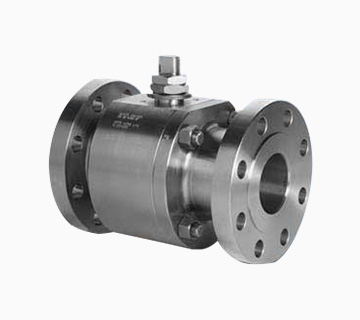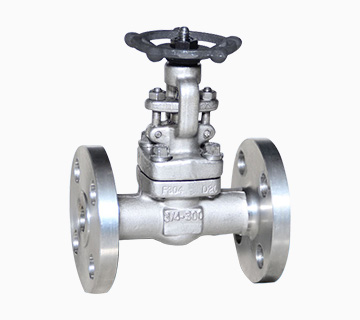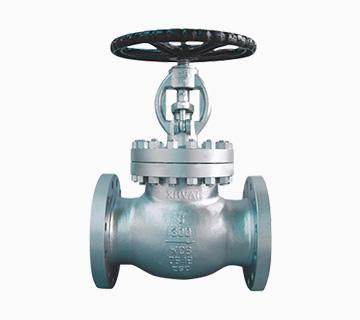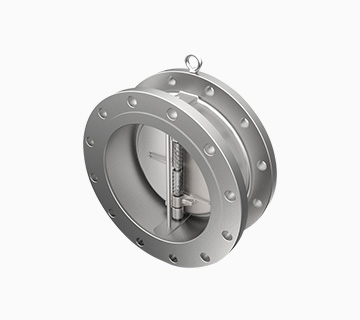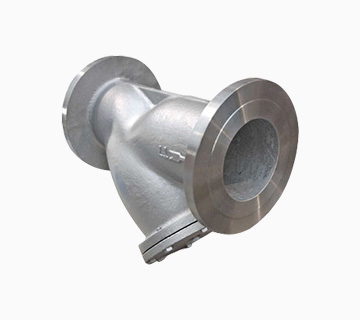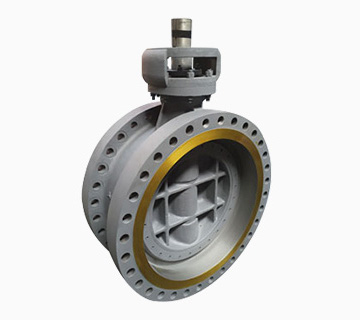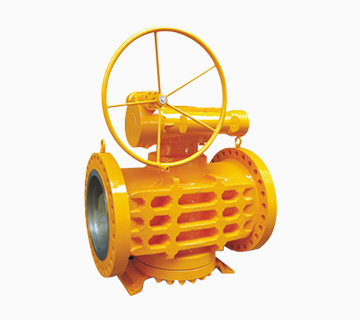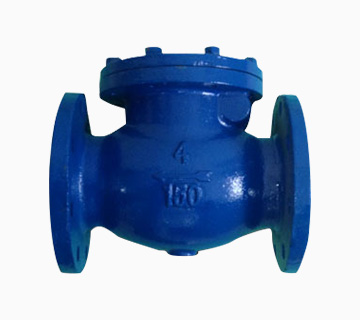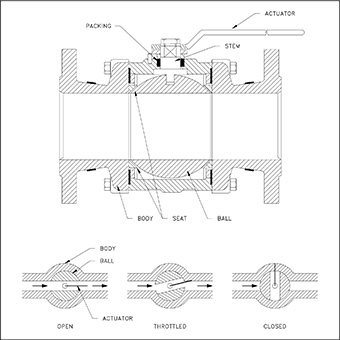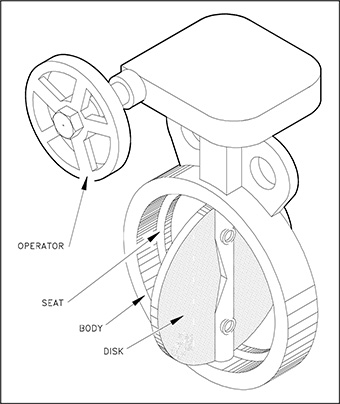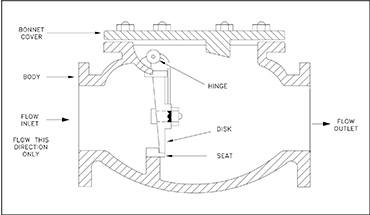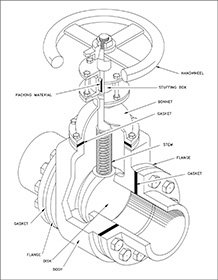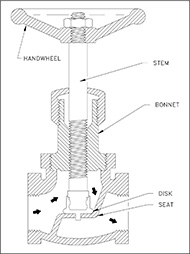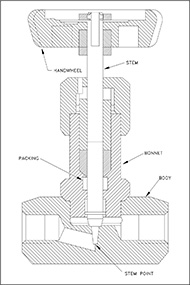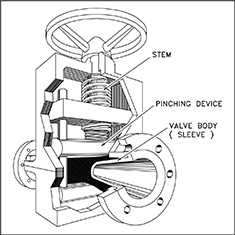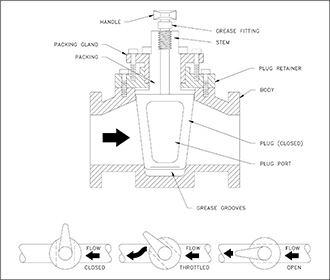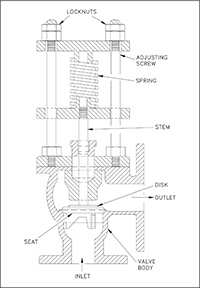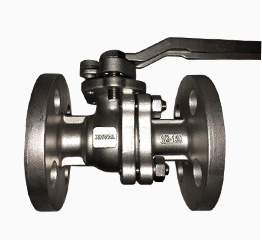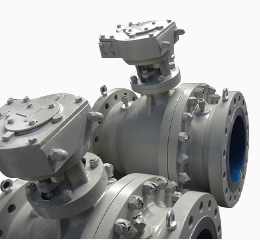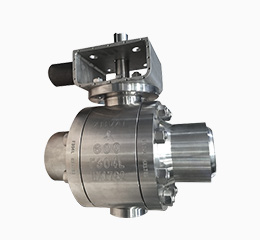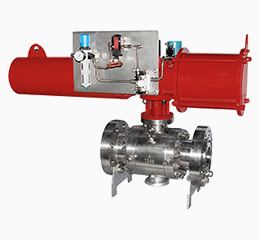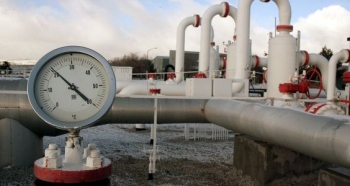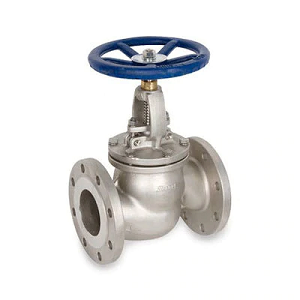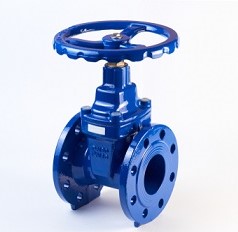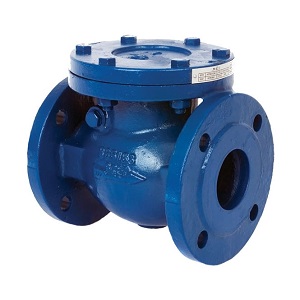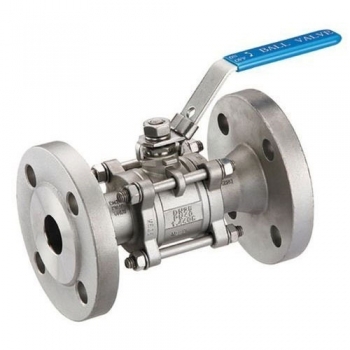Industrial Valves
Home » Product
Are You Looking For Industrial Valves?
XHVAL is an industrial valve manufacturer of ball valves, gate valves, globe valves, check valves, butterfly valves, plug valves, and strainers. Our valve factory in China adhere to ANSI, API, DIN, GOST, BS, JIS, China GB standards and customer specific requirements. Our products have been sold worldwide for a wide range of applications in natural gas, oil, oil refining, chemical, marine, power generation and pipeline transportation industries.
REQUEST A QUOTE FOR MORE DETAILS
The Ultimate Guide of Industrial Valves

What Are Industrial Valves?
Chapter 1
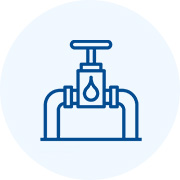
Valve Functions
Chapter 2
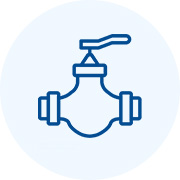
Valve Parts
Chapter 3
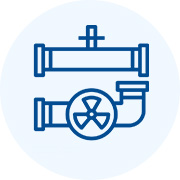
Types of Valves
Chapter 4

Valve Manufacturing Methods
Chapter 5

Valve Opening & Closing
Chapter 6
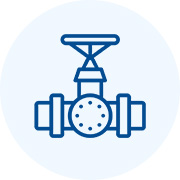
Valve Actuators
Chapter 7
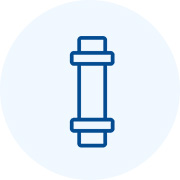
Valve Stems
Chapter 8
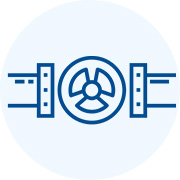
Valve End Connections
Chapter 9
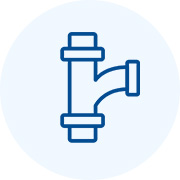
Media-Valve Relationship
Chapter 10

Considerations When Buying Valves
Chapter 11
Request A free quote
We’d like to work with you
- +86 577 5768 9696
- [email protected]
What Are Industrial Valves?
In industrial applications, valves play a vital role in controlling or regulating media movement in piping systems. The wide scope of industrial applications allows more varieties in valve design.
While most are for the stop-start mechanism, certain valves also have throttling capabilities. Additionally, valves are either manually operated or with the use of a gear that moves the actuator.
Any person engaging in the piping business should understand the importance of valves. Knowing the operation and maintenance of valves ensures that these can last longer. It also ensures that the entire piping process is without delays.
This article discusses everything you need to know about industrial valves. Included in this article are the different valve functions and the general valve parts. This article also discusses the commonly used valves in industrial applications.
Types of Valves and Their Functions
Valves play a pivotal role within the piping system, and each valve has a different role to play. To summarize, there are five functions for industrial valves. While it is possible that there are overlapping functions for one type. Commonly, most are more efficient in just one or two functions at a time.
Stop & Start: Valve either allows media to pass or obstructs media flow so it won’t pass.
Fluid Flow Control: The valve controls the media flow. Valves that have this function can be multidirectional. These are also multiports, meaning, they have more than exit points. Such characteristics allow the media to move in different directions.
Pressure & Flow Regulation: Through the opening and closing, valves can adjust or maintain the pressure and flow within the pipes.
OK did you sleep updated on the tasks it actually 26 September other ones finish today speed of them days because we need to record yes Stacy looks like yes exactly she didn’t check the message go to see inch 8 feet we go to see HBAN firstPressure & Vacuum Relief: Valves can relieve over-pressure, especially when there is media flow. It can also increase pressure when vacuum is present.
Throttling: Some valves allow partial opening so a certain percentage of media can flow through.
Industrial Valve Parts And Components
The industrial valve is a collective set of smaller parts. There are internal and external parts. While specific valve types contain certain components definitive to that design, all industrial valves share major valve components. This section will discuss the different valve parts.
Take a look at a cross-section of a valve below to view the major components:
Body
The body houses the internal parts of the valve, including the trim. This is also the passageway for the fluid. Industrial valve manufacturers produce this as either of the three: cast, forged or fabricated. The body also connects the valve on both ends to the pipe system.
The body valve designs depend on the valve functions as well as the size of the pipes to which the valve attaches. That being said, there are three major types:
Full Bore
The diameter of the valve and the pipes are the same. This has very little pressure loss. This design is preferred when there is a need for internal valve cleaning or inspection. Also, choose such a design when the pressure drop or pressure loss affects pump performance.
Full bore body valves reduce material build-up due to the separation of particles in thicker media.
Reduced Bore
The internal diameter of the valve on both ends is smaller than that of the pipe. Additionally, when the pressure drop is not a major consideration, use this type. The reduced bore, also known as the standard bore, is cheaper and lighter.
Crossflow Bore
The crossflow body or the split section body is commonly seen in gate valves, plug type valves. With this design, there is a significant backflow when the plug or disc is at the closing position. Used in throttling, media moves in a more controlled manner in this body valve design.
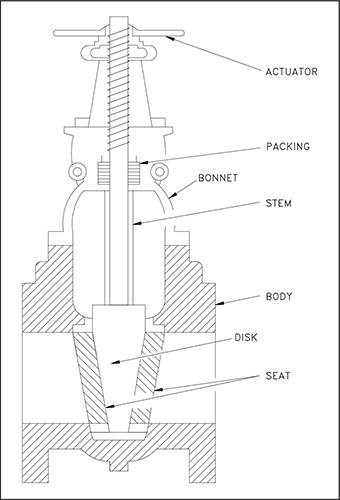
Bonnet
Some industrial valve manufacturers call this part as the cover. There is much emphasis on the bonnet and body connection because the majority of leaks come from this. Split body ball valves don’t have a bonnet as the body is cut into half lengthwise.
The two functions of the bonnet are:
It houses the internal parts of the valves.
It supports the stem since it is in the of the bonnet in many valve types.
Valve Trim
The valve trim refers to the collective valve parts that come in contact with the flow media. These are the disc, the valve seat, and stem. Take note, some valves may have additional parts, but generally speaking, these three are always present in most valves.
The type of seat and disc, along with the placement of the disc in relation to the seat, determine the valve trim performance. It is also the combination of the disc, seat, and stem that determines the movement and control of the valve.
Disc
The disc has alternative names depending on the type of valve. Ball and gate are two other names for the disc. This part can function as a throttle or to stop/permit the flow of media into the valve to the pipes.
Seat
The seat provides the cushion for the disc. Seal rings are its other name. Some types of valves have one seat while others have two or more.
The higher the number of seats, the better sealing. Multiport valves have more seats since these have more than one exit. Some seats are integrated into the valve structure. Others are replaceable.
The quality of the valve seat directly affects the effectiveness of leakage prevention. Depending on the requirements like the type of flow media, temperature and pressure gauges, and the likes, valves are either elastomer like Teflon or metal.
Stem
The stem is the shaft that connects the disc to the actuator. This part supplies the motion needed to open or close the disc. The opening and closing movements are either linear like the gate or globe valves, or rotational like the butterfly and ball valves.
Bolts
Bolts hold one valve part to another, for example, the bonnet to the body. The bolts make the seal tighter.
Actuator
The actuator goes by many names such as wheels, levers, and handles. More often than not, the names follow the design of the actuator. Gate and globe valves have manual handwheels as actuators. On the other hand, ball, plug and butterfly valves have levers that act as actuators.
While manual actuators are common, there circumstances that automation or power is the ideal way to actuate.
There are issues with valve location such as being remote.
Time does not allow the valves to open quickly via manual methods.
The valve is large and the pressure is too high; manual opening becomes risky.
Packing
This is also called the gasket. Packing functions as a seal between the stem and the bonnet. This plays an important role as the proper installation of the packing increases the life service of the valve.
Installed too loose, the valve leaks. Installed too tight, the valve cannot move. Packing, in other words, reduces damage and increases the sealing capability of the valve. It has five components, namely the gland follower, the gland, the stuffing box, and the backseat.
Yoke
The yoke is the arm that connects the body and bonnet to the actuator. Made as a one-piece with the bonnet, the yoke should withstand the force applied to the actuator. The yoke contains the nuts and bushing that act as connectors to other parts of the valve.
What Are Industrial Valves Used For
There are nine major types of valves on the market. Below is a table that shows these valve types and their matching functions. To learn more about each valve, read our 9 Types of Industrial Valves guide that explains the different types in detail.
| Functions of Different Industrial Valves | ||||
| Isolation Valves | Non-Return Valves | Pressure Relief Valves | Regulation Valves | |
| Type of Industrial Valves | Gate Valve | Check Valve | Pressure Relief Valve | Gate Valve |
| Ball Valve | Butterfly Valve | |||
| Butterfly Valve | Ball Valve | |||
| Pinch Valve | Plug Valve | |||
| Plug Valve | Pinch Valve | |||
| Globe Valve | Needle Valve | |||
Ball Valve: Meaning, Design and Application (With Diagram)
Ball valve is part of the quarter turn valve family. It employs a hollow ball-shaped disc for the start and stop mechanism. Because of its design, the ball valve is one of the quickest valves to open or close.
Ball valve is suitable for fluid, gaseous and vapor applications that need bubble-tight shutting down. High pressure and temperature applications are also suitable for this kind of valve only if the seat is metal.
Butterfly Valve: Meaning, Design and Application (With Diagram)
Butterfly valve has a disc that can be flat or concave. This disc prohibits media flow when the valve is closed. The stem adds support by being bored into the disc or attached at one side of the disc. The butterfly valve is also part of the quarter turn family of valves.
This valve is often used in water and gas applications as well as processes with pipes with large diameters. Slurry applications are suitable for butterfly valves. This is also suitable for cryogenics and vacuum services.
Check Valve: Meaning, Design and Application (With Diagram)
Check valve relies on internal pressure to open or close. Otherwise known as a non-return valve, prevention of backflow is the main use of this type of valve.
Check valves are used in applications that need backflow prevention such as pumps and compressors.
Gate Valves: Meaning, Design and Application (With Diagram)
Gate valve belongs to the shut off/on valve family. But, its disc movement is linear. Gate valve uses a gate or wedge to shut off or on media flow.
Gate valves are great shut off/on valves for any application. The knife valve is used for slurries and powder media.
Globe Valves: Meaning, Design and Application (With Diagram)
Globe valve is a plug type, linear motion valve. Shut off/on and fluid flow regulation are its best assets. Like the gate valve, the disc moves up unobstructedly to allow the flow of media. Because of its design, globe valves have great throttling capabilities.
Globe valves perform well when the major concerns are leakage. High point vents and low point drains use this kind of valves. Also, gate valves work when the pressure drop is not a concern.
Needle Valves: Meaning, Design and Application (With Diagram)
Needle valve looks almost the same as the globe valve except that, instead of a globe-like disc, the disc is needle-like. Still part of the quarter turn family, the needle valve gives a more accurate control in smaller piping systems.
Needle valves are used in instruments that need fuller control for fluid surge, the precision of fluid flow or if there is a need for small quantities.
Pinch Valves: Meaning, Design and Application (With Diagram)
Also called the clamp valve, pinch valve is a linear motion valve used to stop or start the flow and to regulate it. A pinch tube using a pinch mechanism acts as the disc that controls the fluid flow. The linear motion allows unobstructed flow of media.
Mostly, pinch valves are used for unrestricted fluid flow. This type of valve is most suitable for slurry applications.
Plug Valves: Meaning, Design and Application (With Diagram)
Plug valve belongs to the quarter turn family. It acts as a bubble tight shut-off and on capabilities. Relatively, it is called the plug valve because the disc is shaped like a tapered plug or cylinder, making it very effective in obstructing fluid flow through the valve.
Plug valve is an effective tight shut off or on valve. Almost all applications including sewage, slurries and mud can use this valve. High temperature and pressure applications are also suitable.
Pressure Relief Valves: Meaning, Design and Application (With Diagram)
As its name connotes, pressure relief valve releases pressure from the pipelines. Its main purpose is to protect the equipment in an overpressured event or to increase pressure when there is a drop. This valve is effective when back pressure is not a major consideration.
Types of Valves
There are three methods of making valves: cast, fabricated, and forged. This section will list compare the advantages and disadvantages of each method. To learn more about what takes place in each stage of valve production, read our Industrial Valve Manufacturing Process guide.
Cast Valve
The casting method starts by melting the metal material and pouring this into molds. The liquid material solidifies in the molds and then removed and polished.
Advantage
Cast valves can be reused. They are also more cost-effective due to the lower production cost. This is the better option when the material is an alloy containing chrome, nickel, and molybdenum.
Disadvantage
Metal shrinkage happens. There are more defects in cast-manufactured valves. These include tears, holes and porous surface. The regulations and specifications are less strict. What this means is shady manufacturers can produce valves of lesser quality.
Fabricated Valves
Fabrication is the process of cutting, forming, drilling or any type of machining and welding metal materials into finished products such as valves.
Advantage
Fabricated valves can withstand high temperature and highly durable. It is also cost-effective. It is also highly customizable.
Disadvantages
There is a post-fabrication process which is costlier. It is also prone to high maintenance costs. Once the metal loses ductility, it develops brittle fractures.
Valve Opening & Closing
There are three ways of opening and closing the valve: linear, rotational and quarter turn. Check out the table below that shows the valves and the methods of opening or closing:
| Valve Opening | Linear Valves | Rotational Valves | Quarter Turn Valves |
| Gate Valve | No | No | Yes |
| Globe Valve | No | No | Yes |
| Ball Valve | Yes | No | No |
| Butterfly Valve | Yes | No | No |
| Swing Check Valve | Yes | No | Yes |
| Lift Check Valve | Yes | Yes | Yes |
| Tilting Disc Check Valve | Yes | Yes | Yes |
| In-line Check Valve | Yes | Yes | Yes |
| Stop Check Valve | Yes | Yes | Yes |
Here is a video of a gate valve opening and closing. Gate valves belong to the linear motion valves.
The upward and downward movement of the disc either closes, opens or throttles the media flowing. Because of the thread design of these types of valves, opening and closing of the valve is slower compared to the other two types.
On the other hand, the butterfly valves is a rotational type as seen in this video.
A rotational valve type has a hinge pin that holds the disc. Once the hinge pin releases the valve, it closes the entry point. Turning the actuator in the other direction tightens the pins. This, in turn, raises the disc to allow media to enter the valve.
Meanwhile, ball valves are quarter-turn motion valves. Here is a video of a ball valve opening and closing.
A quarter-turn or 90°-turn valve only needs that much angle to open or close the valve. Compared to the linear and rotational types, this has a much faster mechanism.
Valve Actuators
Look at the different valve actuation types.
| Types of Operation | ||
| Manual Valve | Power Valve | Automation Valve |
| Hand Wheel Valves | Electric Motor Valves | Not applicable |
| Hand Lever Valves | Air/Pneumatic Valves | Not applicable |
| Gear Wheel Valves | Hydraulic Valves | Not applicable |
| Chain Valves | Solenoid Valves | Not applicable |
There are three major types of actuation operation: manual, power and automation.
Manual going
Manual actuation means the actuator can be opened or closed by hands. Manually driven actuators are the best choices when there is flexibility in positioning the valves. Also, this is the best option when power is too far off to reach the valves along the pipeline.
Manual actuators are not the best choices when the valve is too big. However, hammer or gear heads can aid the actuator if used in larger applications.
Power
Actuators use different power methods for the opening and closing of the valve.
Electric Motor
Electric motors are the machines used in actuators. The electric motor connects to the gear train, that attaches to the actuator. The electric motor aids it. It is also possible that the motor directly opens or closes the actuator.
Pneumatic
This type uses compressed air pressure to directly open or close. A piston attaches to the valve stem. This delivers the air pressure that transmits to the stem, thereby moving it to close or open.
Hydraulic
This uses the hydraulic system to open large valves. The principle behind this is fluid pressure. The hydraulic system either use water or oil to create pressure. Without the hydraulic fluid, the pressure in the spring holds the valve in the closed position.
The actuator opens when the hydraulic fluid enters the spring chamber. When the hydraulic pressure is higher than the spring pressure, the piston and the stem move up and opens the valve, and vice versa.
Solenoid
Solenoids are electromagnet coil that, when there is a power source connection, creates a magnetic field. This magnetic field pulls up the plunger attached to the coil. The T-shaped plunger acts as the actuator. Solenoid actuators are best in not-so-large applications because the power source stacks up expensively.
Automation
Automatic actuators do not use external force to open the valves. Rather, it uses internal fluid or gas pressure.
Valve Stems
The valve stem receives the actuator motion so that the valve can open, close or throttle. There are five types of valve stems based on the orientation of the thread, as well as the movement of the stem.
Rotary Stem
Quarter-turn valves such as the butterfly valve, plug valves as well as the ball valves have this kind of stem. For the valve to open, the stem only needs to turn a quarter.
Sliding Stem
Contrary to the other stems in this list, the stem does not rotate. Rather, it slides to open or close the valve. Applications that need fast opening require this stem design. Control valves with pneumatic and hydraulic actuators are such examples.
Non-Rising Stem
The non-rising stem has its threads inside the valve. As its name connotes, the stem becomes stationary. Opening and closing of the valves mean the valve disc travels up or down in rotation along the stem.
The design exposes the stem to the media when the valve is open. That being said, the media also impacts the stem. In connection with this, two issues arise: how the design affects stem durability, and how the design affects pressure levels.
Non-rising stems are used when there is more linear movement, given the limited valve and pipe diameter.
Rising Stem with Inside Screw
Similar to the previous type, the thread is also inside the body. The stem exposed to the external environment is smooth. However, in contrast, rotation makes the stem and actuator rise to open and down to close. Once the stem rises, the body exposes the threads to the media. This can cause erosion to the threads, creating leaks over time.
Rising Stem with Outside Screw
This design, more popularly known as OS & Y, is similar to the previous design as the stem rises once the valve opens and vice versa. However, the difference is that the thread is in the exposed part of the stem. The one in contact with the valve is smooth.
The rising of the thread can be one of the two designs:
1. The stem has an attached handwheel that goes up together for opening the valve.
2. The handwheel rotates and the stem rises alone.
Valve End Connections
Valve end connections refer to the connection of the valve to the pipe system. There are five types of these connections. Check this video below to understand more about valve ends.
Threaded
The threaded type needs also to have the corresponding thread in the pipes so they fit together. The valve end has the female thread and the pipe end, the male thread.
Both ends must follow the same standards. Take note, though, there are several standards available the National Pipe Thread Tapered (NPT), the British Standard Pipe Taper Threads (BSPT) and the British Standard Parallel Pipe Threads (BSPP) .
The threaded type can be one of two types: the straight threaded and the tapered threaded. The straight threaded ends have a soft seal like an O-ring or a washer placed between the pipe and valve connections. On the other hand, the tapered threaded type does not have that soft seal.
Flanged
Flanged-end valves are easy to install and remove. This connection uses bolts to connect the valve to the pipeline. A gasket is installed between the two connections to ensure a tight seal.
Flanged connections have several industrial standards to follow. Examples are ANSI/ASME or the American National Standards Institute and American Society of Mechanical Engineers, respectively. There is another standard that industrial valve manufacturers follow called DIN, when translated to English it means German Institute for Industrialization.
Butt-Welded
The outer edges of the pipe and valve when stacked together create a bevel or valley. This is where the welding is done. The bevelling creates a more uniformed thickness to the pipe-valve connection. Often done on steel pipes and valves, pipes with this type of valve can endure high pressure and temperature.
Socket-Welded
The valve has a wider diameter than the pipe diameter so the pipe is inserted into the valve. Closing of the rim is done by welding it. This type of connection is permanently closed and leak free.
Media-Valve Relationship
Media is the material that flows through the valve. It directly affects the valve and disc material. The speed of the flow correlates to high pressure and temperature. That being said, there are certain media types that are not suitable for a particular valve. Check the table below:
| Valve Type | ||||||||
| Ball Valves | Butterfly Valves | Diaphragm Valves | Gate / Knife Valves | |||||
| Media | ||||||||
| Liquid | Neutral | X | X | X | X | |||
| Corrosive | X | X | X | X | ||||
| Hygienic | X | X | ||||||
| Slurry | X | X | X | X | ||||
| Fibrous Suspension | X | X | ||||||
| Gas | Neutral | X | X | X | X | |||
| Corrosive | X | X | X | |||||
| Vacuum | X | X | X | |||||
| Solids | Abrasive Powder | |||||||
| Lubricating powder | X | |||||||
| Globe Valves | Needle Valves | Plug Gate Valves | Plug Valves | |||||
| Media | ||||||||
| Liquid | Neutral | X | X | X | X | |||
| Corrosive | X | X | X | |||||
| Hygienic | ||||||||
| Slurry | ||||||||
| Fibrous Suspension | ||||||||
| Gas | Neutral | X | X | X | ||||
| Corrosive | X | X | X | |||||
| Vacuum | X | |||||||
| Solids | Abrasive Powder | |||||||
| Lubricating powder | ||||||||
Considerations When Buying Valves
There are many factors to consider when buying industrial valves.
Purpose
What is the purpose of the valve? Is it for throttling or control? Is it for start-stop operations?
Media
The media that flows through the valve greatly affects the lifespan of the valve. Furthermore, the wrong kind of media may cause damage to the valve. Some media are corrosive, others are abrasive.
Some have high-pressure levels while others have low temperatures. Knowing the media and how it works with the valve material is an important consideration.
Actuation
Whether manual actuation is the best option or not, actuation is also a factor worth considering. Process pipelines require large valves. Manual actuation is not suited for a large valve. Instead, use pneumatic or automated valves.
Material of Construction
The valve body material is important because it should suit the right media. Choosing the wrong kind of material means shorter valve lifespan.
For example, use corrosion-resistant materials if the media is acidic. High-pressure media uses valves made of an alloy that can resist high temperature and pressure levels.
Valve Type
Certain actuators work well with particular valves. For example, the ball valves often have the quarter turn movement so the best actuator is a rotary or quarter turn. It does not need the lever type because it does not move up or down to open or close the valve.
Valves can either perform one or two actions such as shut off, divert the flow, pressure relief, mix flow and adjust the flow.
Pipe Considerations
The valve diameter with the same size as the pipes can withstand high pressure. But when the valve diameter is smaller than the pipe’s, there is the tendency for the valve to bend. The bending may cause external and internal leakage.
End Connections
The end connections of the valves often follow that of the pipe. Having said that, compatibility is of the two is vital. A flanged end valve is not the required one when the pipe employs a thread.
Industry Standards
Valves follow certain standards. With that in mind, there are standards for the material of the valve. There are standards for the end connections. It is important that valves follow the rigid regulations imposed by international bodies. This ensures safety and proper valve installation.
Valve Supplier
The valve supplier is the point of contact when thinking of buying industrial valves. The valve supplier should provide the customer with the right valve manufacturer.
The former is responsible for informing the customer about the industry standards and other considerations. He should be able to provide the right product with the right price point. He should also aware of customer needs, the right type of valve for a particular industrial application.
What to Look for in a Valve Supplier / Manufacturer
Industrial Certifications
A good valve supplier or manufacturer should have industrial certifications. This shows that the products available are of top quality because these have passed rigid regulations. The industrial certifications imply that the work area has been checked and assessed according to the requirements of the governing body.
Variety of Valves
A good valve supplier has a wide array of valves and valve components. The manufacturer should have clear and reachable timelines expectations. Furthermore, with a large inventory, the manufacturer assures the customer that the component needed is readily available.
After-Sales Service
Valves need repairs. A great industrial valve supplier should give after-sales services.
Commitment to Safety
Safety is an issue in process industries. Because of that, regulations become more strict and change every now and then. A good supplier of industrial valves should be able to adhere to these changes.
In Summary
The wide choices of valves can overwhelm the buyer. However, if equipped with the right industrial valve information, decision making becomes much easier. Valves vary in their functions. By knowing the purpose of the valve narrows the list of valve choices. This article has discussed what one needs to know before buying a certain industrial valve.
Request A free quote
We'd like to work with you
- +86 577 5768 9696
- +86 577 5768 7951
- [email protected]

